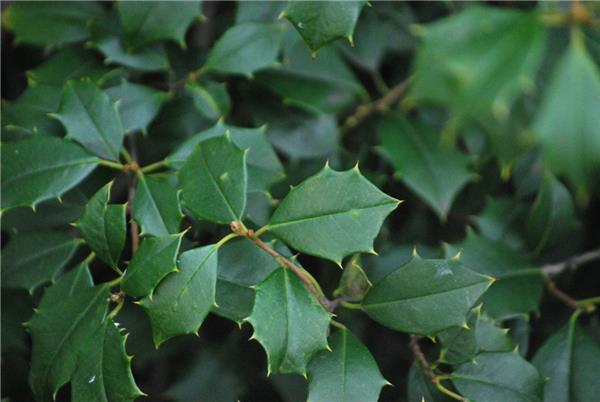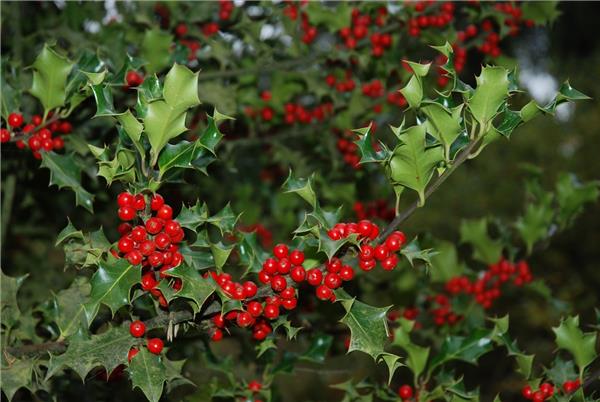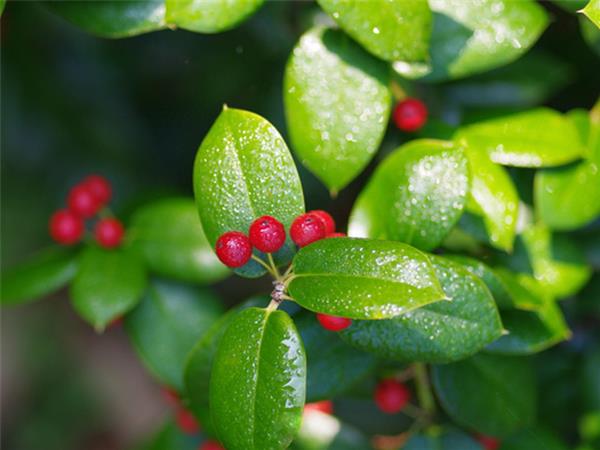[French holly disease] how to control French holly disease
There are many kinds of plants, and many plants are very similar or even the same in appearance, so it is necessary to distinguish two similar plants from their plant morphological characteristics, growth habits and scope of application. So how to control the disease of French holly?
Seedling cultivation and pest control of French holly
Cuttage seedling
The main method of propagation and cultivation is cuttage propagation, and it can also be sown and propagated. The use of cuttings for propagation is not only simple and easy, but also takes root quickly and has a high survival rate, so it is widely used in production.

The planting bed should choose the land with high topography, deep soil layer, loose soil and good drainage and irrigation. After removing grass roots and stones, a high border of about 1.2m was formed and irrigated with 1000 times of imidacloprid and 1500 times of mancozeb to remove underground pests and harmful bacteria. After leveling the nursery bed, flatten it with a spade, pour 10% rotting rare human feces and urine, and then cover the bed with a layer of sifted coke ash or yellow soil, which is about 5 meters thick.
The cuttings should be shallow rather than deep, the branchlets should be cut flat and face down, and the depth of the mother plant should be 1 cm in the soil; the depth of the big branches should be 1 cm in the upper and middle of the next stem node, and the cuttings are tilted to about 45 degrees with the ground, and the shallow oblique insertion is beneficial to the early rooting and survival of the cuttings. After the cuttings are inserted, the soil around the cuttings should be compacted and immediately watered once to make the lower part of the cuttings firm with the soil. Generally speaking, the row spacing of the cuttings is 12Mui 15cm, and the plant spacing is 6MUR 8mm. When cutting, the leaves on the cuttings should not be left too much, nor should they be completely cut off. The lower leaves can be completely cut off with the petioles, and the upper leaves can be left with 2 leaves. According to the size of the leaves, each leaf should be cut with 2 to 2 canopies to reduce the excessive consumption of water and nutrients.

Prevention and control of diseases and insect pests of French holly
After the French holly is inserted, it is required to build a shed for shade in order to reduce transpiration and direct sunlight on the seedbed. When planting in early spring or late autumn, you should also cover it with film to prevent winter damage. After planting, it should also be often watered to keep the soil of the seedbed moist, and it is appropriate that the soil on the surface of the seedbed is not white. Topdressing for cutting seedlings can be combined with watering, or foliar spraying with phosphoric acid: potassium hydrogen plus urea. The weeding work should be very meticulous and do not collide with cuttings. French holly has strong stress resistance, few diseases and insect pests and occasional occurrence of diamondback moths or aphids, which can be sprayed and controlled by pesticides such as dichloromethine and imidacloprid.
French holly is propagated by cuttage, which usually begins to take root in about 25 days and new shoots sprout and grow in about 40 days. After 3-4 months of cultivation, the seedlings can be out of bed and transplant when the seedling height is 15-20 cm, and the success rate is more than 95%.
French holly is sometimes harmed by root rot and black rot, which is sprayed or irrigated with 1000 times of the antimicrobial agent 401acetic acid solution. The pest is harmful to red mackerel, and it is sprayed with 1000 times of triclofenac wettable powder.

When French holly has stem rot, leaf spot and corner spot, spray with 75% chlorothalonil wettable powder 600 times. Insect pests are harmful to aphids, leafhoppers and shell insects, which can be sprayed with 1000 times of fenitrothion EC.
French holly brown spot
Integrated Management:
The main results are as follows: (1) remove the diseased and disabled body in time, bury it deeply or burn it.
(2) reasonable close planting and proper application of phosphorus and potassium fertilizer.
(3) when continuous infection occurs, spray with 3% polyantimycin 900 times, 29% stone sulfur mixture 100 times, 27% copper noble 500 times 800 times, 4% agricultural antibiotic 120 water agents 600 times 800 times, 1% Wuyimectin 100 times 200 times.

Alternaria spot of French holly
Integrated Management:
(1) in the growing season, sporadic diseased buds, diseased leaves, diseased branches, diseased flowers and diseased fruits should be removed in time, buried or burned, without spraying.
(2) in autumn and winter, clean up the tree plates and remove withered branches and leaves.
(3) spray the tree plate and trunk with 45% solid stone sulfur mixture 30 times.
(4) follow the forecast of diseases and insect pests. In the expected year of epidemic, spray must be used in time, such as 100,200x solution of 1% Wuyistin, 900x liquid of 3% polyantimycin, 1250g / 2500x liquid of 25% Amisida suspending agent, 60000x liquid of 4% agricultural antibiotic 120 water agent, 20000fold liquid of 2% panamicin, 1000 times liquid of 88% antimycin hydrate and so on.
- Prev

[the difference between Flos Lonicerae and Forsythia suspensa] what is the difference between Flos Lonicerae and Forsythia suspensa
[the difference between Flos Lonicerae and Forsythia suspensa] what is the difference between Flos Lonicerae and Forsythia suspensa
- Next

[harm of Eichhornia crassipes] what are the hazards of hyacinth
[harm of Eichhornia crassipes] what are the hazards of hyacinth
Related
- Wuhan Hospital Iron Tree Blooming Result Was Instantly Frightened by the Gardener Master
- Which variety of camellia is the most fragrant and best? Which one do you like best?
- What is the small blue coat, the breeding methods and matters needing attention of the succulent plant
- Dormancy time and maintenance management of succulent plants during dormancy
- Minas succulent how to raise, Minas succulent plant pictures
- What are the varieties of winter succulent plants
- How to raise succulent plants in twelve rolls? let's take a look at some experience of breeding twelve rolls.
- Attention should be paid to water control for succulent plants during dormant period (winter and summer)
- Watering experience of twelve rolls of succulent plants
- Techniques for fertilizing succulent plants. An article will let you know how to fertilize succulent plants.

